What Hi-Fi? Verdict
The Melco N10/2 is an understated but hugely capable performer that’s one of the finest digital sources we’ve heard
Pros
- +
Dynamic and authoritative sound
- +
Impressive detail and clarity
- +
Excellent build
- +
Built-in storage
Cons
- -
No built-in DAC
- -
Dedicated app could be more stable
Why you can trust What Hi-Fi?
What is the Melco N10/2? The company likes to call the product a ‘Music Library’, which is a pretty good description. Simply put, it is digital storage – 3.84TB worth of SSD (Solid State Drive) in the case of the N10/2-S38 we have on test here. That’s enough for almost 6000 CDs, though high-res recordings will take up more space, of course.
Price
You can buy another version of the N10/2 called the H50 that has 5TB of a conventional hard disk drive (HDD) and sells for £7299 / AU$ 12,995 / around $9500.
It doesn’t take more than a short Google to find out that computer storage is way cheaper than it used to be, and these kinds of capacities can easily be had for hundreds rather than the thousands they used to cost. So, what’s the point of something as expensive as the N10/2-S38?
Build
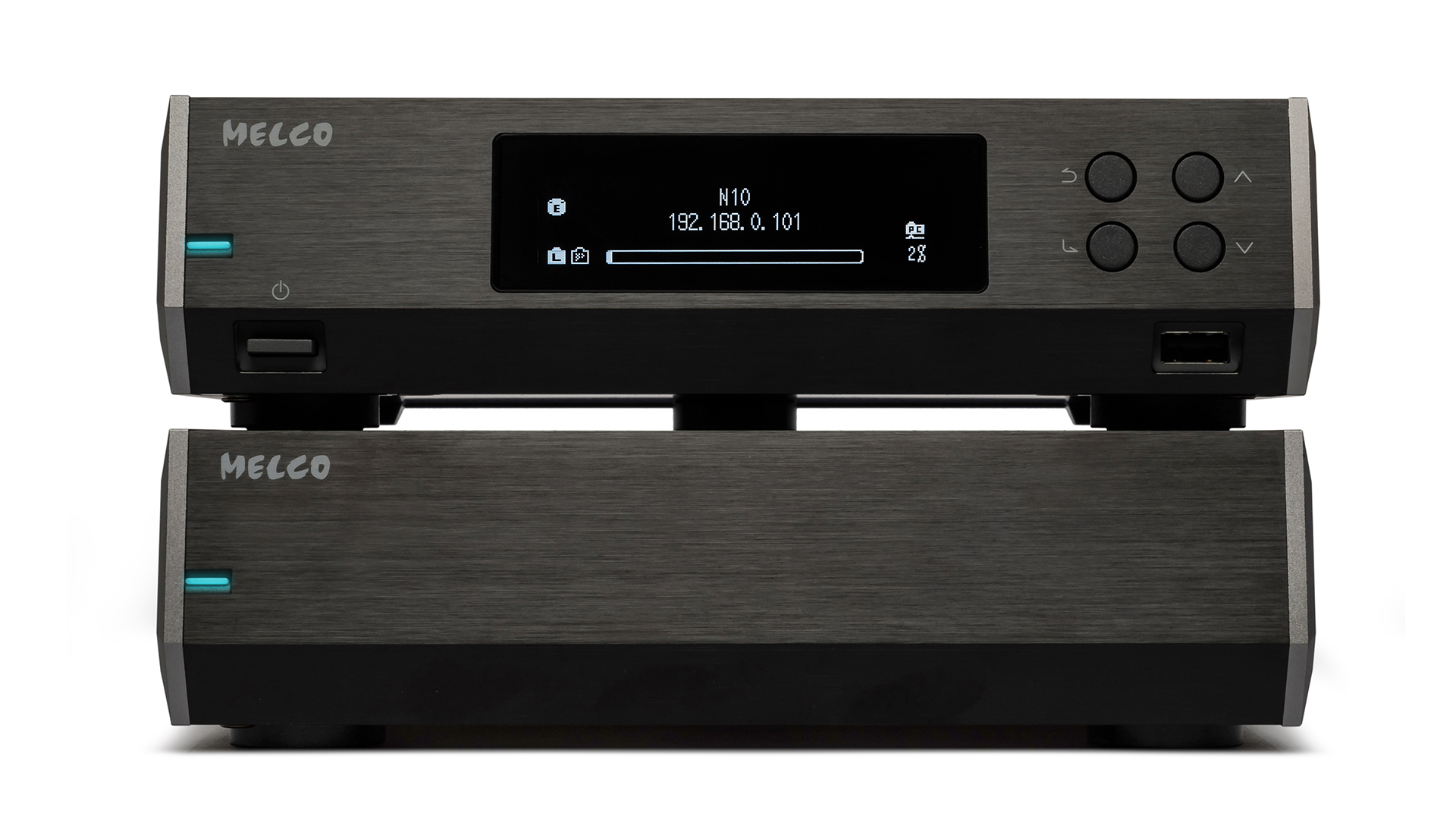
As so often in hi-fi, it pays to look beyond just the specifications. Melco was founded in 1975 as an audio manufacturer, but moved into the computer industry in 1981 under the Buffalo brand name. Buffalo, of course, has gone on to massive success and is now one of the leading manufacturers of computer storage.
The skill set required to design computer storage, and work with network products in general, is quite specific. It is way outside the comfort zone of most hi-fi manufacturers, particularly the small companies at the high-end of the market. That’s why so few of them have made any sort of impact when it comes to the world of music streaming and computer audio in general.
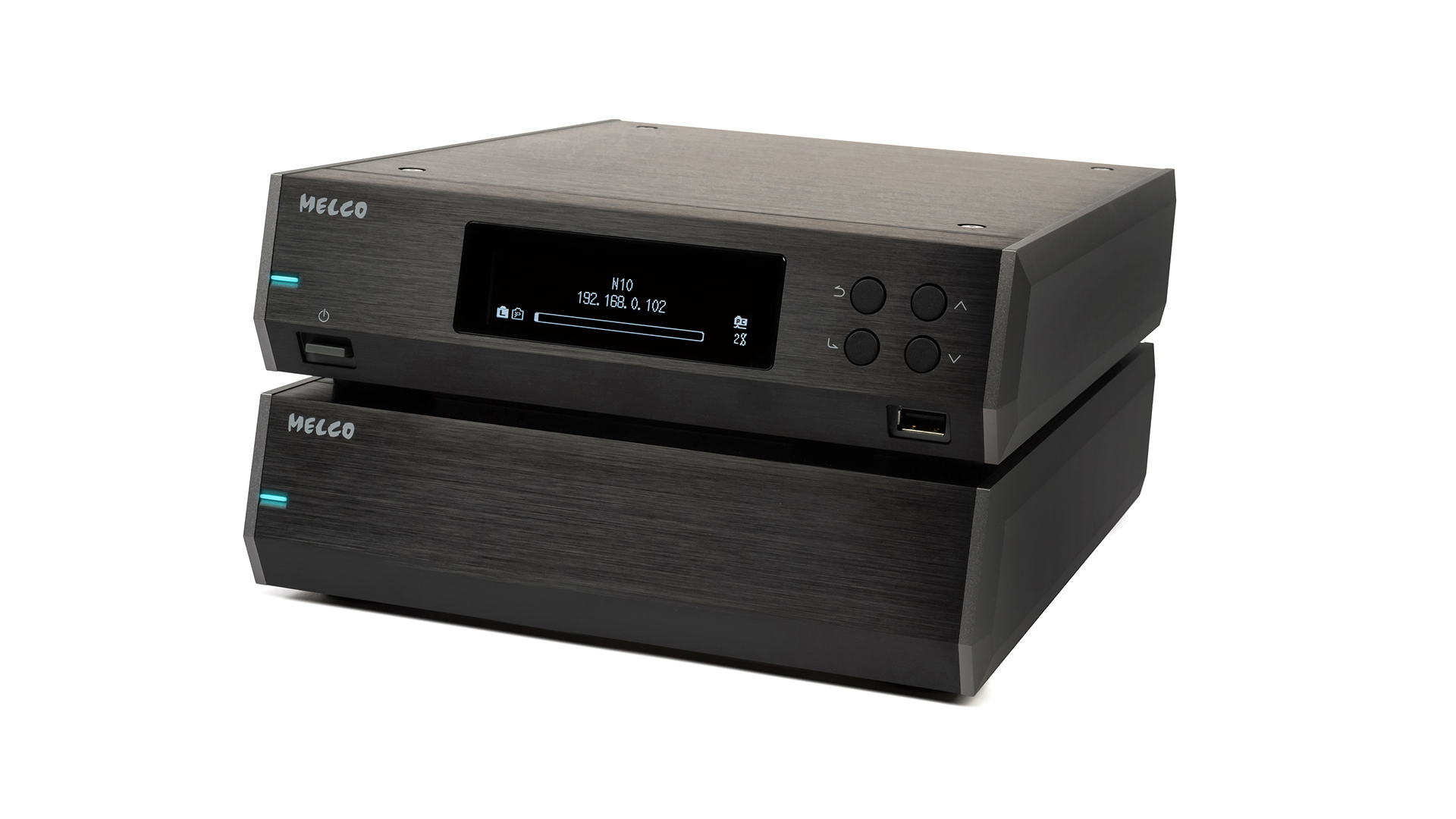
Type Server/streamer
Storage 3.84TB SSD
Resolution 32-bit/384kHz/ DSD 512
DAC No
Dedicated app Melco HD
Digital outputs USB
Melco’s inside knowledge of the field is immediately obvious in the slick way the N10/2-S38 operates. Unless you are really comfortable with computers and networks, it’s probably best to get the selling dealer to set things up for you. Given the price of this unit we feel it should be part of the deal. Once that’s done though, this unit works as slickly as they come. Being the SSD version it is quiet and responsive.
The N10/2 comes in two parts: the main unit and a separate outboard power supply. It’s always a good idea to keep an electrically noisy circuit like a power supply with large currents flowing through it away from more sensitive audio sections, purely for sound quality reasons. Interestingly, Melco has decided to go for a traditional hi-fi-style linear power supply layout rather than the switch-mode designs that are more usually seen in the computer world.
The main unit is a simple, uncluttered affair with just four control buttons and a rather small display on the front. Once we are familiar with it, going through the menus is pretty easy though the display still feels a little limited. Of course, most of the controlling is done through an app. Melco has a dedicated offering in the form of Melco HD, but there is no problem using third party UPnP streaming app alternatives such as mConnect or similar. In fact, you don’t have to look hard to recognise that the Melco app and mConnect are closely related. Oddly, despite the similarity, the Melco app proves less stable in use, crashing on occasion.
Compatibility
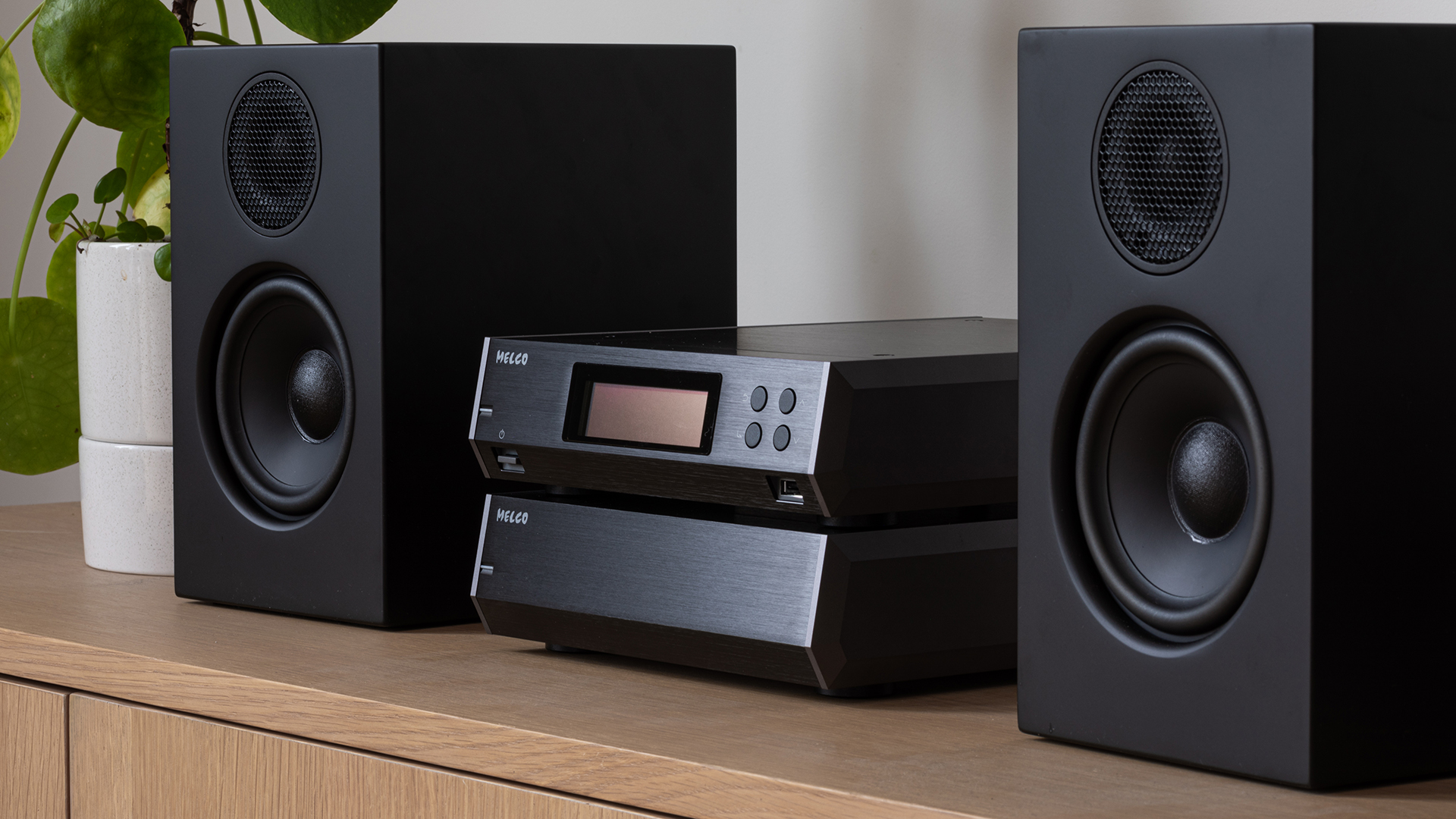
The N10/2 comes with both MinimServer and TwonkyMedia server software, as well as SongKong that helps to organise the music database. Knowing just how important it is to get the right metadata tagged onto your music files, Melco has worked hard to ensure that every file is categorised as accurately as possible, with specific treatments for the requirements of different types of music. For example, in classical music where multiple works are included on a single album, it’s important to identify them as well as the album. The same applies to information about the composer.
File compatibility is excellent with the Melco able to handle PCM files up to 32-bit/384kHz and DSD 512 – that should more than cover most people’s music collections. We found that the player switches between formats swiftly and seamlessly.
Connectivity is limited to the essentials. Wi-fi is off the menu, which is something of a surprise, and means that the N10/2 has to be hard-wired with an ethernet cable to your home network. While this may not be particularly convenient, it makes perfect sense when it comes to network stability – there’s nothing more annoying than network related interruptions when you are deeply engrossed in the music. Beyond that, there are three USB 2.0 Type A sockets, with one on the front, to connect additional storage devices. This is the world of computers, and back-ups aren’t just desirable but are essential if and when something goes wrong. The last thing you want to do is lose your entire music collection and have to start again.
Interestingly, one of the rear panel USBs can be assigned as a digital output to feed an outboard DAC. Adding a digital-to-analogue converter turns the N10/2 into a highly appealing stand-alone music server/streamer solution. Alternatively, you can just use this unit as storage and plug your existing music streamer into the Melco’s dedicated ‘player’ ethernet socket, bypassing the need for a switch and separating the pairing from any unwanted noise that exists on the home network. This is another small detail that is unusual and makes sense on performance grounds.
The Melco is a small unit, understated but visually elegant in its simplicity. The umbilical connecting the power supply to the main unit is pretty short, meaning that the two sections either have to sit side by side or can be stacked. Overall build quality is excellent with the solid aluminium casework on both boxes finished to very high standards. Take a look inside and you’ll see that care has been taken to decouple any sensitive audio circuit from external vibrations.
Sound
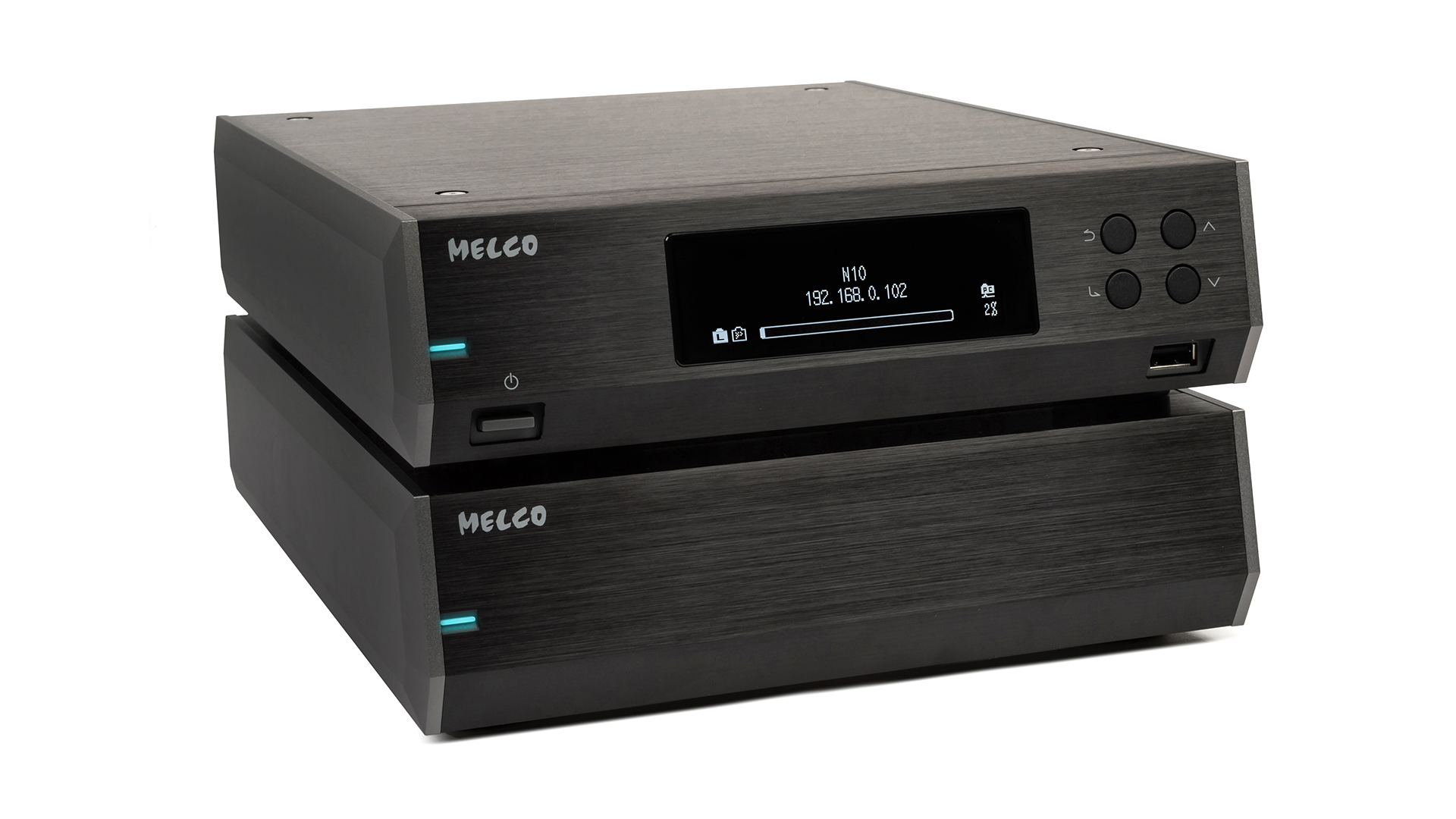
We start by using the N10/2 as a music server feeding our reference Naim ND555/555 PS DR music streamer. The rest of the set-up is our usual reference system of Burmester 088/911 Mk III amplifier and ATC SCM 50 speakers. Our usual server is Naim’s Uniti Core, which has worked well and reliably over the years.
There will always be those that think digital things like servers make no difference to sound quality, but that isn’t the case in our experience. While noting that the Melco comes in at more than four times the cost of our Uniti Core, there is no denying that we hear way more in terms of subtle detail and authority when listening to a range of files off the N10/2.
There’s a sense of power and solidity that the same music files accessed from the Naim lack. As we listen to Tchaikovsky’s Marché Slave Op.31, the presentation is sharply etched without being obtrusive, and a precise as we’ve heard. It’s more open than we’re used to, with greater space around the instruments. We’re more aware of the orchestra’s power and its dynamic reach. There’s also a truer sense of the recording venue in terms of size and scale.
A quick comparison to Melco’s cheaper N100 ‘music library’ – broadly the same price as the Naim Uniti Core – shows that both siblings share the same crisp, clean and precise character, but the N10/2 shows considerable advantages when it comes to muscularity and expression.
We add an outboard DAC to the N10/2 in the form of Chord’s excellent Hugo TT2 (£4750 / $6725 / AU$9000), and the combination turns into one of the finest music streamers that we’ve heard. Whether taking high-res files from its own hard drive or the Uniti Core, this pairing delivers a combination of clarity and authority that's hard to better.
Nick Cave’s Carnage set comes through with unusual boldness; the presentation rich with texture with low level details brushed up for inspection. There is so much information but it’s organised in a musically cohesive way, one that encourages the listener to focus on the music rather than analyse the production or recording. We love the confident way this Melco/Chord combo paints Cave’s distinctive tones and the surefooted manner with which it handles the album's mostly easy-going rhythms.
Hans Zimmer’s Interstellar OST is a massively demanding piece of music with densely layered instrumentation, deep extended lows and some savage dynamics. The Melco/Chord pairing shines here, delivering huge, expansive soundscapes that are wonderfully stable and beautifully layered. The sound is composed and there’s always a feeling of everything being under control no matter how demanding the music gets. Dynamic extremes are handled with ease and there’s a terrific amount of insight and heft at low frequencies that makes even our reference Naim streamer sound a little light and ill-defined in this region.
Tonally things are even, though on the slightly tauter, leaner side of neutral. Those looking for a rich or overly smooth sound would do better by swapping the Chord DAC for a more suitable alternative, though we doubt you’ll find anything more insightful for similar money.
We listen to a wide range of music from Bob Marley’s evergreen Legend set to Radiohead’s brilliant In Rainbows album, taking in the likes of Stevie Wonder, Bruce Springsteen and Mahler in between, and the N10/2 never misses a beat. Once set-up properly it works well and in a fuss free manner.
Verdict
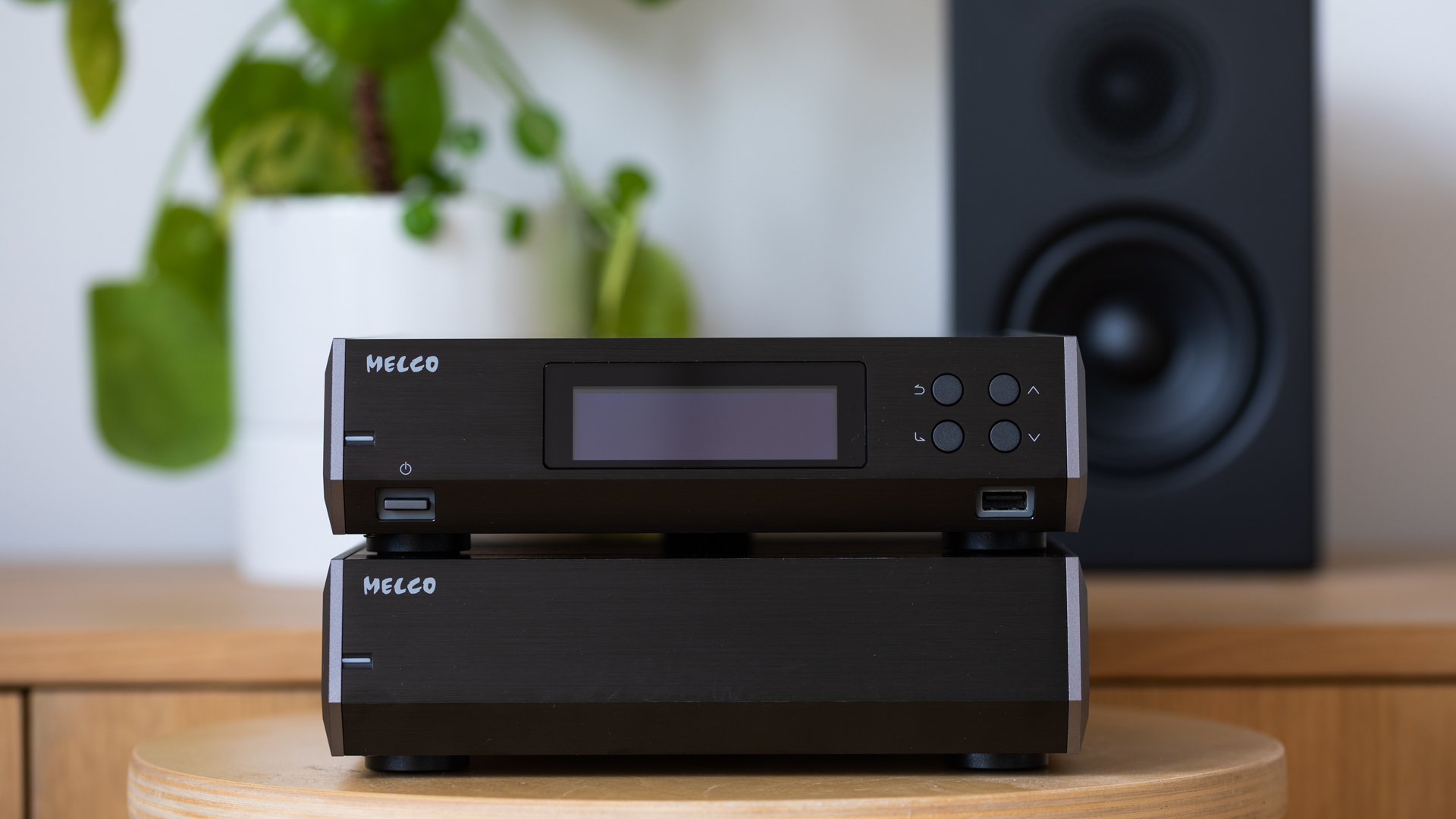
The Melco N10/2-S38 is expensive, and on paper doesn’t look great value. But in use it’s a charmer. If you’re looking for a cutting-edge high-end digital source this one deserves to be near the top of your list.
SCORES
- Sound 5
- Build 5
- Features 5
MORE:
Read our review of the Naim ND 555/555 PS DR
Also consider the dCS Bartók
What Hi-Fi?, founded in 1976, is the world's leading independent guide to buying and owning hi-fi and home entertainment products. Our comprehensive tests help you buy the very best for your money, with our advice sections giving you step-by-step information on how to get even more from your music and movies. Everything is tested by our dedicated team of in-house reviewers in our custom-built test rooms in London, Reading and Bath. Our coveted five-star rating and Awards are recognised all over the world as the ultimate seal of approval, so you can buy with absolute confidence.

